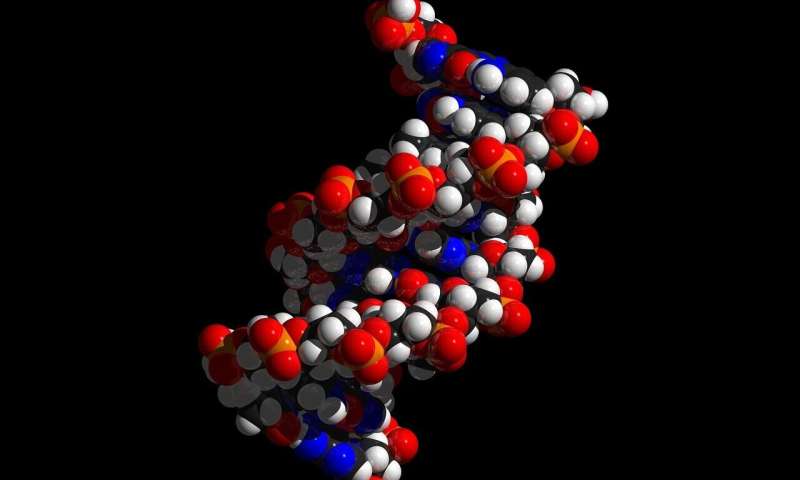New method reveals where DNA is at risk in the cell

Researchers at Karolinska Institutet have developed a new sequencing method that makes it possible to map how DNA is spatially organized in the cell nucleus—revealing which genomic regions are at higher risk of mutation and DNA damage. The technique is described in an article published in the scientific journal Nature Biotechnology.
Most cells in the human body contain approximately two meters of DNA. This long stretch of DNA is divided in 46 large pieces—the chromosomes—which occupy discrete regions of the cell nucleus known as chromosome territories.
How individual parts of the genome are spatially arranged in the nucleus strongly affects how they are being read by the cell's transcriptional apparatus. However, the spatial arrangement of individual genes in the three-dimensional (3-D) space of the nucleus has remained largely unexplored.
High-resolution maps
Now, a team of researchers led by Dr. Magda Bienko at Science for Life Laboratory (SciLifeLab) and the Department of Medical Biochemistry and Biophysics at Karolinska Institutet has developed a new genomic method, named Genomic loci Positioning by Sequencing or GPSeq, which can be used to obtain high-resolution maps of how DNA is spatially organized in the cell nucleus.
The method works by gradually cutting the DNA from the nuclear periphery towards the center, followed by reading the DNA sequence around each cut. Mathematical modeling can then be used to reconstruct the 3-D genome structure and find where individual genes and regions between genes are located along the nuclear radius as well as in relation to each other.
"We found that the spatial distribution of different types of chromatin (composed of DNA, RNA and protein complexes) often differed from what we expected to find," says Dr. Bienko, one of the senior authors of the paper. "To our surprise, we found that the picture is not as simple as having all the inactive chromatin sitting at the nuclear periphery and the active chromatin amassed in the center. Instead, there is a continuum, a gradient of increasing activity from the nuclear periphery towards the interior, even though the inactive chromatin can be found in the very center of the nucleus too."
Reveals which regions are at risk
An important aspect of knowing where different genomic regions are located in the nucleus is that it is now possible to map where DNA damage and mutations are most likely to occur, explains Dr. Nicola Crosetto, a senior researcher at the same department at Karolinska Institutet and the other senior author of the paper.
"We discovered that DNA mutations that are often encountered in different cancer types are enriched in the inactive chromatin located at the nuclear periphery, which might have to do with the fact that many mutagens originate from outside the cell," he says. "On the other hand, DNA breaks and gene fusions are much more likely to be found in the nuclear center, which might be due to the high levels of transcription that we find in the center."
More information: Gabriele Girelli et al. GPSeq reveals the radial organization of chromatin in the cell nucleus, Nature Biotechnology (2020). DOI: 10.1038/s41587-020-0519-y
Journal information: Nature Biotechnology
Provided by Karolinska Institutet

















